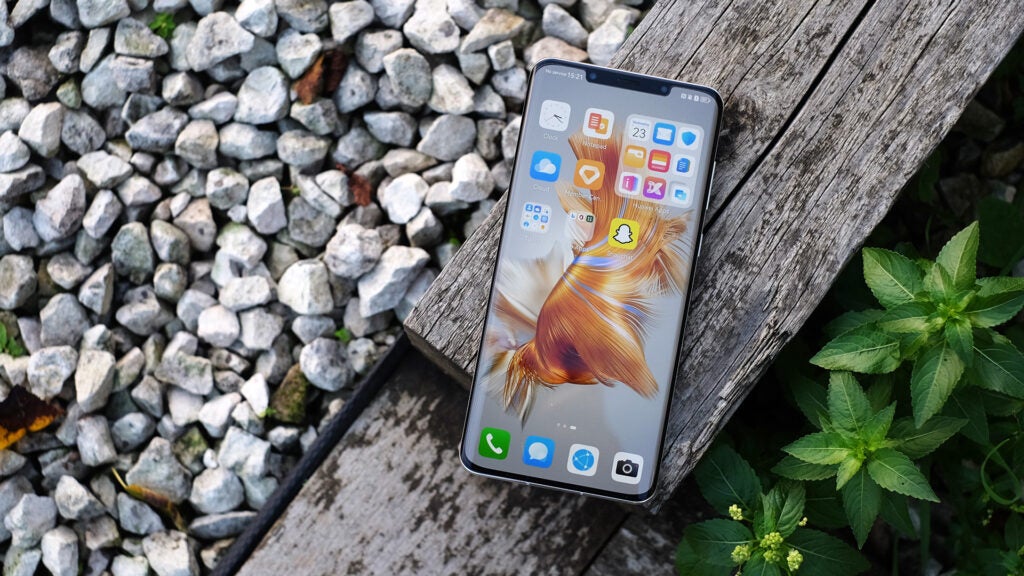The Huawei Mate 50 Pro has a great set of cameras, good speakers and a bold design. But it’s a 4G phone that costs as much as the top iPhones and Samsungs, and it has access to very few of the apps and games that can make full use of its hardware.
Pros
- Great water resistance
- Triple camera array is great and lots of fun to use
- Eye-catching design
Cons
- Severe thermal throttling of performance
- No 5G mobile internet
- Too expensive
- Does not have Google apps
- Rubbish app store
-
Qualcomm Snapdragon 8+ Gen 1 SoCThis phone has one of the most powerful mobile processors, but it’s the 4G version, so bear that in mind before buying. -
Variable aperture cameraThe Mate 50 Pro is just one of a handful of phones made to date with variable aperture, letting you alter how much light gets into the sensor. -
IP68 water resistanceHighly water-resistant and dustproof, the Mate 50 Pro matches the best flagship phones around in terms of ruggedisation.
Introduction
The Mate 50 Pro is Huawei’s flagship Android phone for late 2022 and beyond. It costs a fortune and, like classic models in this series, aims to show off the best in phone tech.
In some areas it does. The Mate 50 Pro has an excellent set of cameras that, for me, after months of reviewing lower-end and midrange models, serves as a reminder of how fun it is to walk around with a good telephoto camera in your pocket.
I can’t picture recommending this phone to many people, though – particularly not at its current high price. It’s the same old story: the Mate 50 Pro doesn’t have 5G, Google apps or Google Play access.
Huawei’s solution of a poor first-party app store and a search engine that scours a bunch of semi-reputable sources for app install files just doesn’t cut it at this level.
Design and Screen
- Curved glass front and rear panels
- Excellent IP68 water resistance
- Powerful lower speaker
The Huawei Mate 50 Pro is an eye-catching phone. It continues the style of the Mate 30 Pro, placing the rear cameras in a giant circle – a disc that sticks out from the phone’s back.
It’s bold – the kind of design that might have seemed a speculative concept render a few years ago. The quality of the build is mostly great, as long as you are willing to put a little faith in its unusual parts.
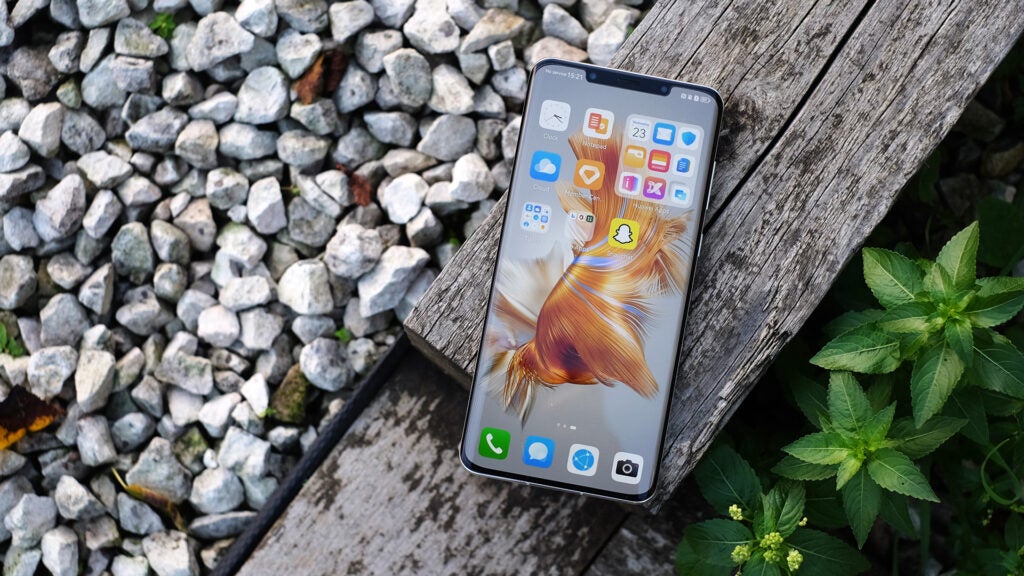
The Mate 50 Pro is a sandwich of two curved glass panels, with aluminium in-between. A metal ring sits around the camera disc, with fine detailing along its top. Surprisingly enough, the top surface of the disc appears to be some form of plastic, but the camera lens protection is, of course, glass.
Huawei does not use the industry-standard Gorilla Glass in the Mate 50 Pro, though. The orange vegan leather version of this phone has Kunlun nanocrystal display glass – a new formulation made by Huawei that it claims has superior drop resistance. But my silver version? It has unnamed glass by who-knows, which is not a great look for a phone this pricey.

But the Mate 50 Pro does have excellent IP68 water and dust resistance. It’s also one of the few flagship phones with expandable memory – yay! But you can only use one of Huawei’s nano-SIM-sized NM cards – boo!
There’s no headphone jack either, and the speakers’ output is uneven. One driver sits at the bottom of the phone, the other by the earpiece on the front. This upper driver has a thinner sound, so lower-frequency content from that channel is actually played through the bottom speaker.
The resulting sound is still quite impressive, with a richer and smoother tonality than that of the Xiaomi 12T, which I used before the Mate 50 Pro. But the latter’s right-side bias is quite clear when you watch a music video with the phone on its side.
The Huawei Mate 50 Pro has a 6.74-inch screen with a resolution of 2616 x 1212 pixels. This is only a little higher than the 1080p norm of much cheaper models. It’s well below the 3088 x 1440 of the Galaxy S22 Ultra and slightly below the 2796 x 1290 pixels of the iPhone 14 Pro Max.
I don’t think most people should care that much, however. I couldn’t see any fuzziness to text even when eyeballing the screen surface in close-up.
Indoors, the Mate 50 Pro will head up to 535 nits of brightness – a bit punchier than most – and in direct sunlight, it maxes out at 825 nits. That’s decent, although no higher than I’ve seen in some midrange phones recently.
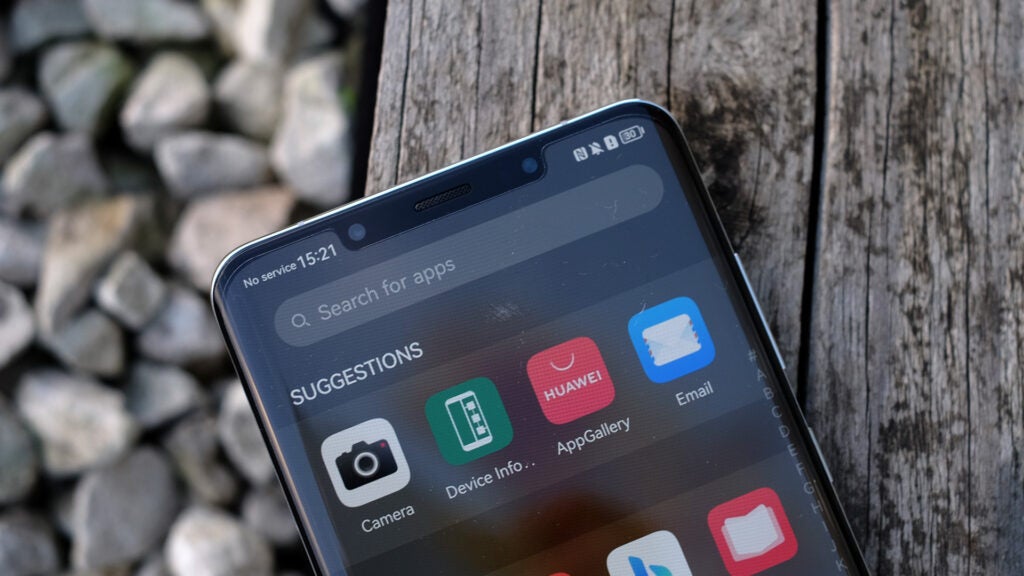
The standouts of the Mate 50 Pro screen are its colour and curve. As with previous top models in this range, the display panel curves around at the sides to match the curvature of the front glass.
I also think this phone’s default colour mode is great. Huawei says it cycles between colour standards to suit the app used – and it really works. Your photos’ colour isn’t amped up in the gallery, and home screen icon colours look vibrant. Alternatively, the Vivid mode uses extra-saturated colour the whole time, which I wouldn’t recommend.
Other aspects of the display are exactly what you’d expect from a high-end phone. It has a max refresh rate of 120Hz for smooth scrolling, and it supports HDR video.
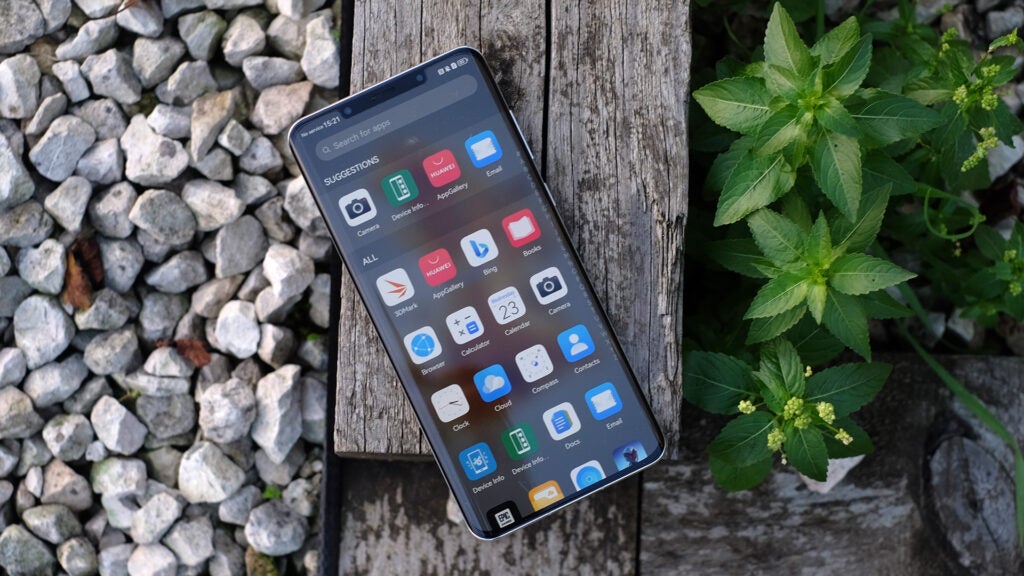
Performance
- Throttles dramatically under pressure
- Very powerful SoC
- No access to Google apps or services
Huawei is well-known in geeky circles for its HiSilicon processors – as seen in the P50 Pro phones. However, both the Mate 50 Pro and Mate 50 use the Qualcomm Snapdragon 8+ Gen 1 instead.
This is a super-powerful processor with fantastic peak graphics performance. In 3DMark’s Wild Life test, for example, it scores 10,529 points – similar to the score of an iPhone 14 Pro Max. That’s big because iPhone chipsets have sailed ahead in this area for years now.
The Mate 50 Pro can’t hold onto that power for too long, though. In a stress test, the phone’s power dropped dramatically after 10mins and became erratic as it tried to balance heat and performance. At one point, it had just 36% of its peak power. Ouch.
Qualcomm’s + version of the 8 Gen 1 seen here was partly designed to deal with the original version’s heat problems, by using a more efficient architecture. But performance stability is still bad, and this version of the chipset is 4G-only. There’s no 5G mobile internet.
The performance dip could be Huawei approaching things conservatively, however, because the Mate 50 Pro really didn’t get all that hot while I played some Fortnite.
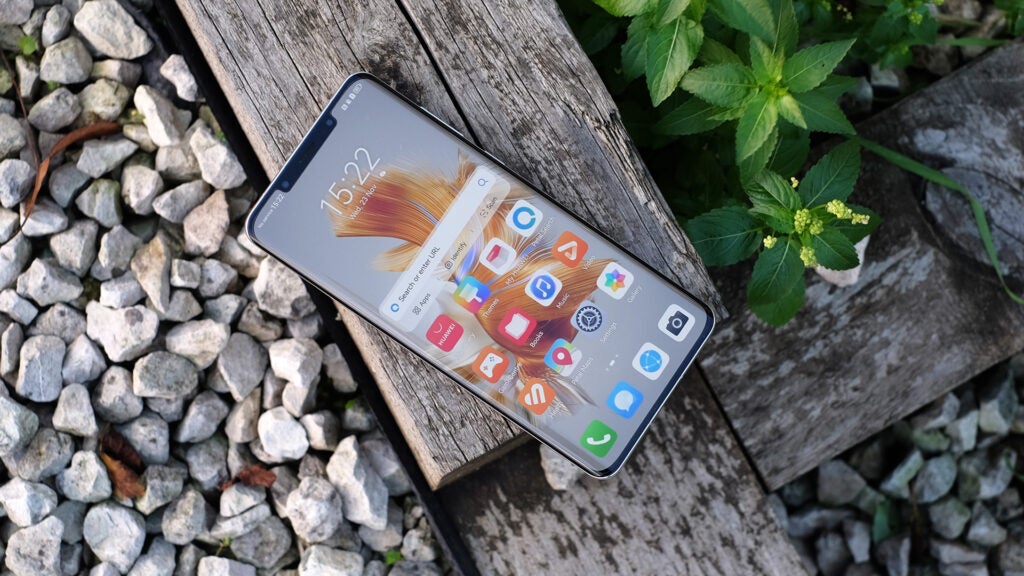
That game runs beautifully on this phone. Sure, there are occasional frame rate drops when you turn around, but it runs just as well as any Android I’ve seen. And all the graphics options are unlocked here, including the 90fps mode.
However, I don’t think the Mate 50 Pro is a great gaming phone, because the library available to it is poor. As has been the case since 2019, Huawei phones don’t have Google apps. That means no Play Store, no Gmail or Google Maps.
In their place, you get Huawei’s AppGallery, Petal Maps and so on – the Huawei stand-ins. At times, they are a little gross compared with their Google counterparts. Petal Maps keeps shoving a £2 Bolt discount in my face, putting it right in the location search bar.
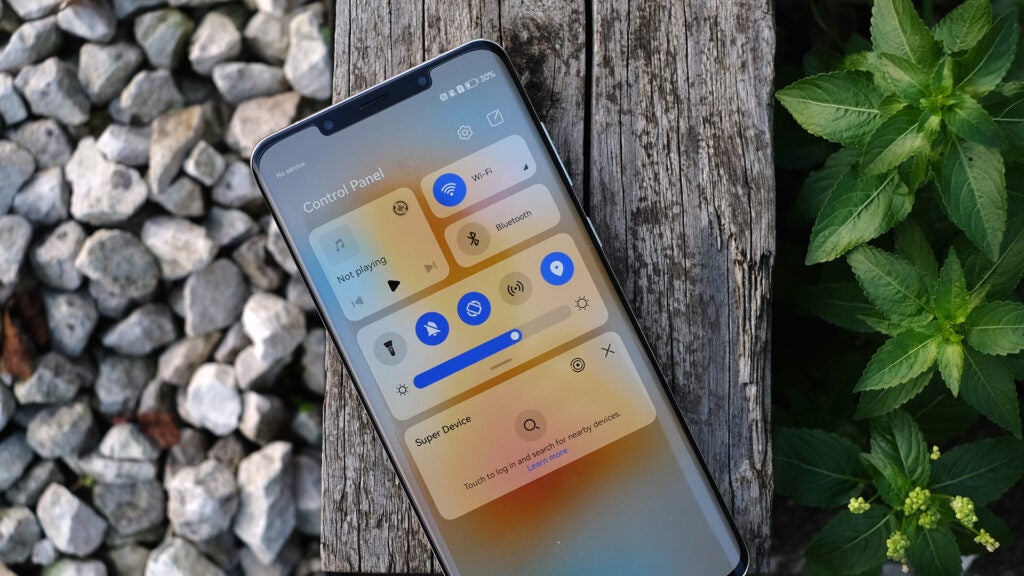
AppGallery shows a promo advert whenever I open up the app. I can stomach this kind of ad-flinging on an Amazon tablet, where there’s a sense the tablet’s cost is partly subsidised by the amount you’ll be spending on Amazon-owned content in the future. But this doesn’t fly after paying nearly £1200 for the Mate 50 Pro.
The more significant issue is that AppGallery is unlikely to have all the apps you want, and there’s no good solution to this problem. Huawei offers Petal, a search tool that shows you places other than AppGallery where you can find downloadable apps.
While handy, user protections are limited here, and Huawei quietly shrugs off responsibility with a disclaimer link that accompanies search results. What you can get from the linked third-party app stores and websites is very limited anyway – you won’t typically find premium apps and games there.
A lot of folks will buy a Mate 50 Pro with the plan to install Google services on there. But I’m not writing this review for those folks.
The Android experience without Google apps remains kind of depressing. And even when you do find a way to get the apps you need, other issues often emerge. For example, WhatsApp is available from the official website, but you can’t recover your backup messages and images because they’re stored on Google servers. Precious memories, binned.
Camera
- A very fun camera to use
- Three rear shooters
- Strong zoom skills
Let’s get back to the good stuff. The Huawei Mate 50 Pro has a great camera – one that is bags of fun to use at all times.
While it looks like there are four cameras on the back, there are actually three. You get a 50-megapixel primary camera, a 13-megapixel ultrawide and a 64-megapixel 3.5x periscope zoom.

The big new feature for this year is variable aperture. Aperture refers to the size of the hole that lets in light, and almost all phones have a fixed hole. The Mate 50 Pro’s main lens can open up in four stages. You can watch the little blades move as you change the aperture setting.
It’s neat tech, but I personally don’t find it as impactful as some other aspects of this camera. When your subject is very close, there’s a noticeable change in background blur, but it’s nothing like changing the aperture on my FujiFilm APS-C camera, where portraits of people 2m away can be given a super-silky, super-pronounced bokeh effect. Here, the crop factor – the small sensor — limits the effect of a wider or narrower aperture a lot.
However, I still think taking photos with the Mate 50 Pro is a blast. It’s one of the most best phone cameras I’ve used all year, and this is 95% down to the zoom. It lets you take far better pics of animals from a distance, and the camera itself is of high enough quality to have its own mild background blur effect when your subject is only a few feet away.

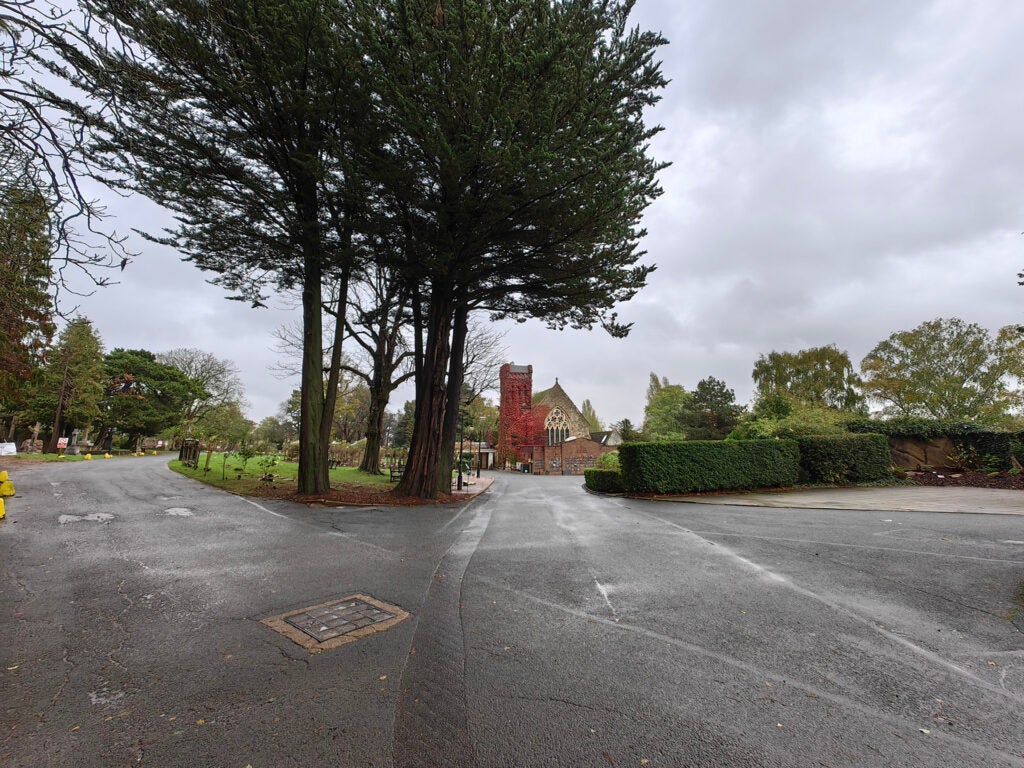

Huawei pushes the hardware to its extreme limit by offering a 10x zoom preset, even though the camera itself is only a 3.5x zoom. The counterargument is, of course, that it uses a super-high-res 64-megapixel sensor. But this sensor is designed for 4-in-1 pixel binning and 16-megapixel photos.
Images at 10x are rather soft – not quite a match for those of a Samsung Galaxy S22 Ultra 5G and its 10x camera, and about 60% of my super-zoomed images had some blur (mostly in the subject). But I still had a great time using this mode.


General image quality is great from the primary camera. Night photos can look incredible, whether you use the Night mode or not – it tends to amp up colour a bit and increase the sharpness of the image but largely through processing.
Above-average night results are possible with the ultrawide camera and when using the 3.5x zoom preset, too, although looking at them up close, it appears the Mate 50 Pro switches to the main camera in low light – or it may use a combination of the two cameras’ output to generate images.
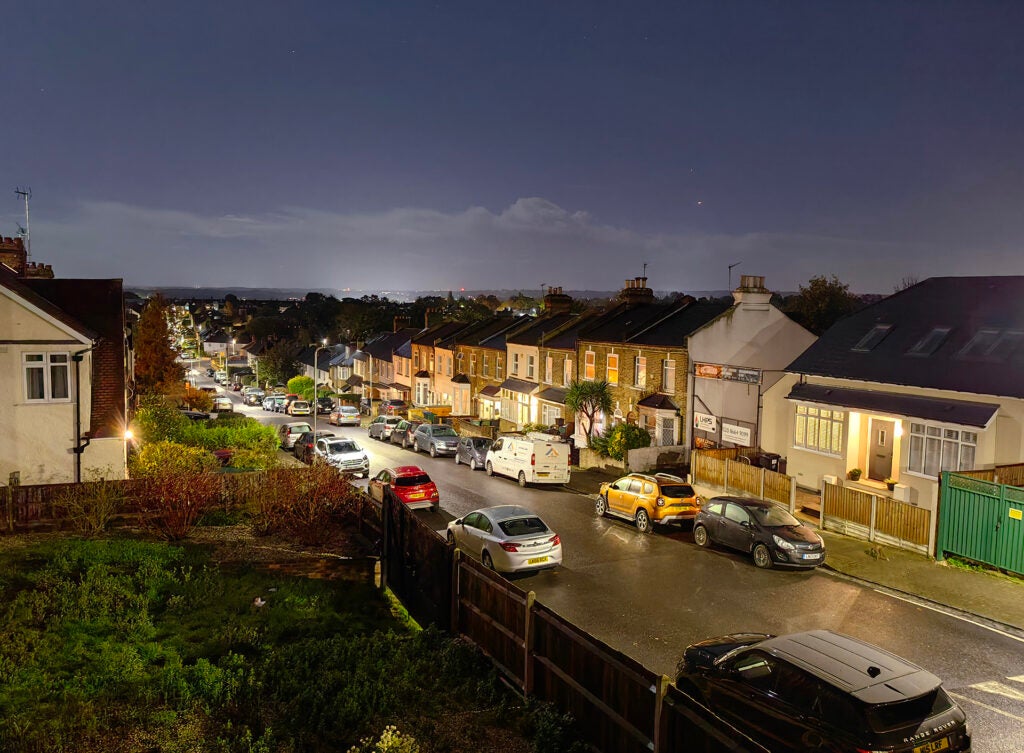
Colour is generally good, with a tendency for some tones to look a little hotter/more saturated in certain scenes, often at 1x zoom.
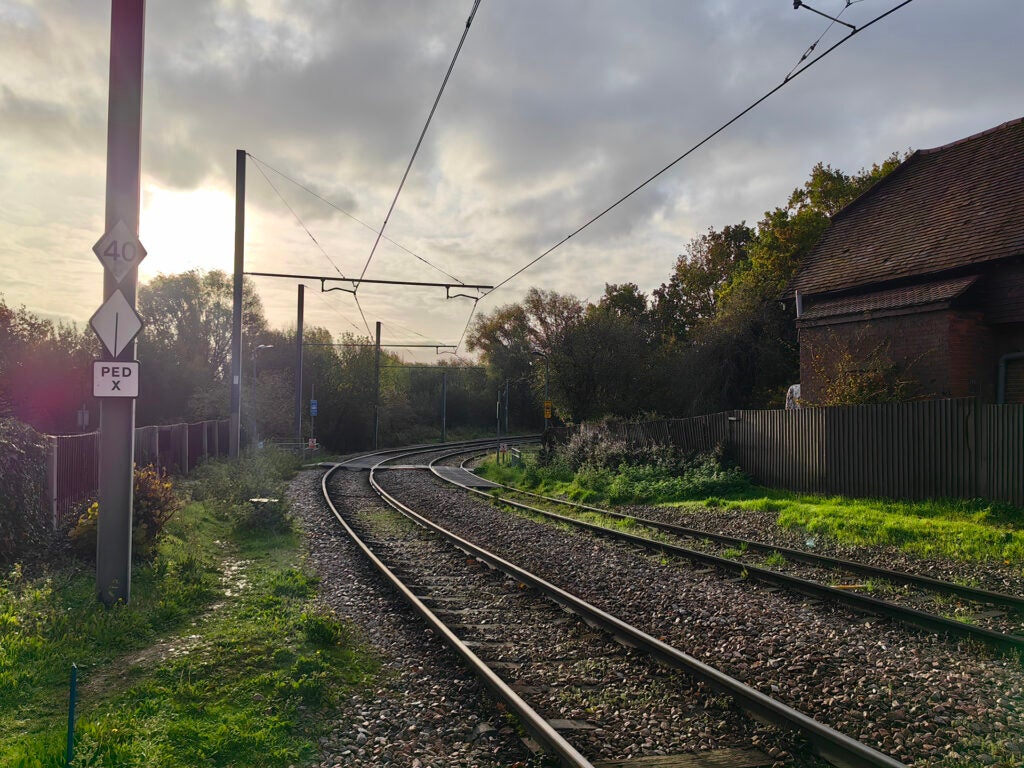
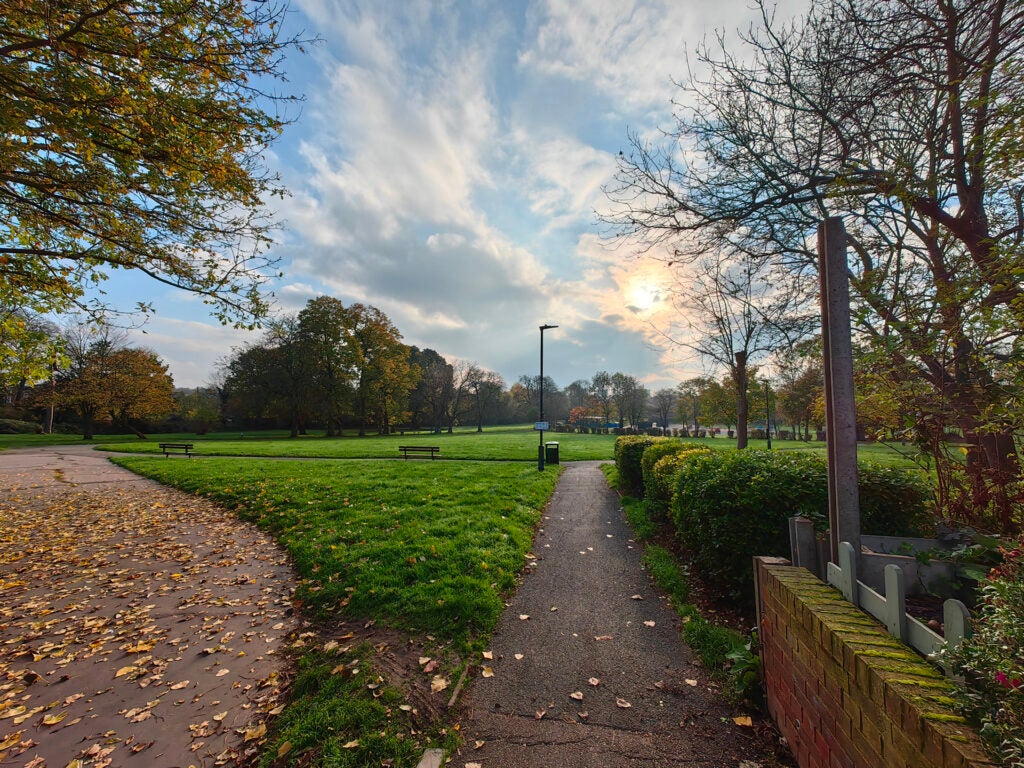
Video can be captured at up to 4K resolution, 60fps, and image quality is good at both 4K and 1080p. I noticed some in-frame blur on footfalls – even during the day – which suggests the handling of shooting parameters is not quite as foolproof as, for example, an iPhone 14’s.
The Mate 50 Pro’s front camera is strong too: a 13-megapixel with an unusually forgiving focal plane, meaning you can get closer to the phone without your face becoming a blurry mess.
Battery Life
- Good but not class-leading charge speed
- Above-average stamina for its capacity
- Supports fast wireless charging
The Huawei Mate 50 Pro does not have industry-leading charging speeds, offering 66W, whereas others from the likes of Xiaomi have 120W or even more. However, the Mate 50 Pro still charges in 42mins, compared with 28mins for the 120W Xiaomi 12T Pro.
Wireless charging is excellent, with 50W max power when used with the right pad. While I haven’t been able to test this, Huawei is getting closer to the dream of reaching near parity between cabled and wireless methods. The 5W reverse wireless charging is on hand too, should you want to charge a pair of earphones that support Qi charging.
The Mate 50 Pro’s battery capacity is 4700mAh – lower than what you’d typically find in a cheaper phone of this size, because when you make an expensive phone, it needs to be thin (apparently).
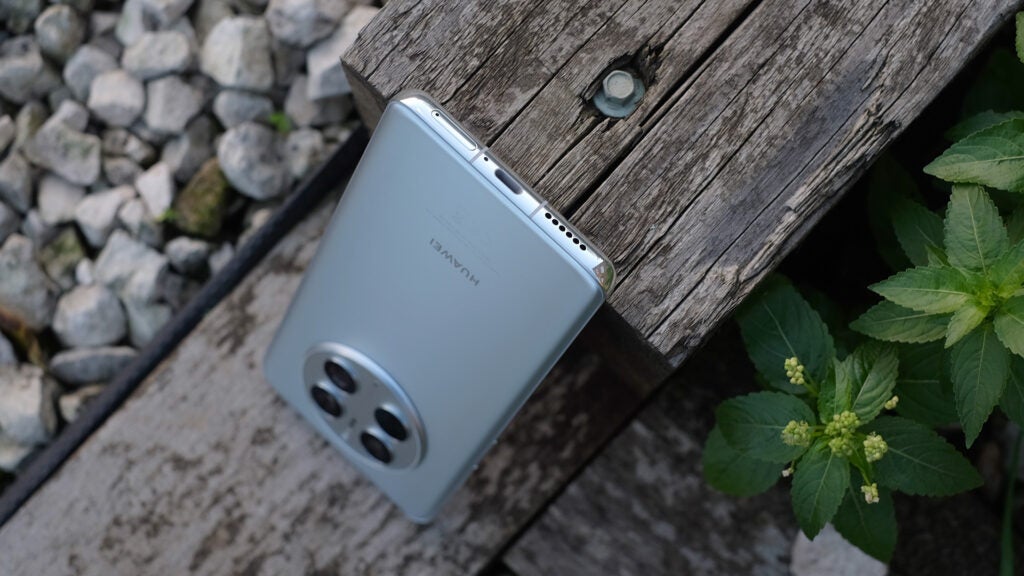
I haven’t been able to test the Mate 50 Pro as I normally would – simply because too many of the apps I use daily aren’t available on this phone. However, it does seem to punch at least slightly above its weight for the capacity it has, and getting it to last a full day with a solid amount of charge left over is no issue.
Battery drain while on standby seems to be excellent too, which is handy for light users. But why would you buy a phone like the Mate 50 Pro if you aren’t going to use it extensively?
Should you buy it?
Camera is key: The Huawei Mate 50 Pro has a great camera that produces striking and energetic-looking photos, while the impressive low-light performance and periscope zoom let you capture shots other phones might stumble over.
You want Google and 5G: Lacking 5G and Google Play access, the Mate 50 Pro feels very limited for the average Western buyer, particularly considering it costs £1,199. It’s best suited for confident techies who can find ways around its limitations.
Final Thoughts
The Huawei Mate 50 Pro’s camera is lots of fun to use, but the phone as a whole is hard to recommend unless you’re willing to sacrifice the benefits of Google support and software
It’s expensive, it doesn’t have 5G mobile internet and dramatic performance throttling means you can only appreciate its full power for short periods at a time.
However, the major issue is the one that still affects all Huawei phones: you have no access to Google apps or the Google Play app store. Huawei’s replacement app store is poor, and it tries to fill in the rest by directing you to app installer files scattered over the internet – a potential security nightmare.
At £1199, the Mate 50 Pro is pricier than the more versatile Samsung Galaxy S22 Ultra while costing the same as the iPhone 14 Pro Max (although the version with 256GB storage costs more). Do I think you should pick the Mate 50 Pro instead? No.
FAQs
No, there’s no support for Google apps and services here.
There’s no Google Play access, only Huawei’s AppGallery, which has a much more limited selection of apps.
This is a 4G-only phone.

